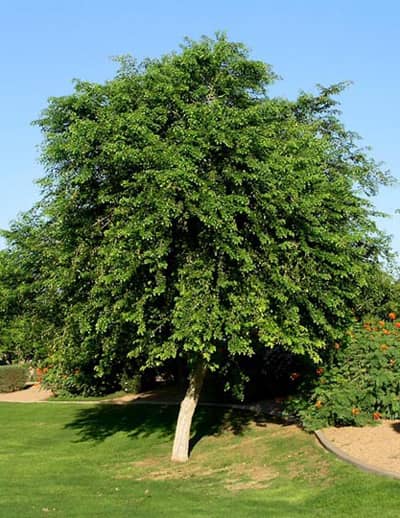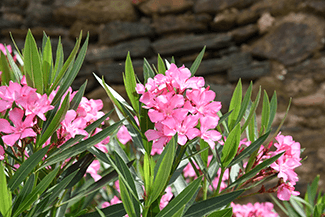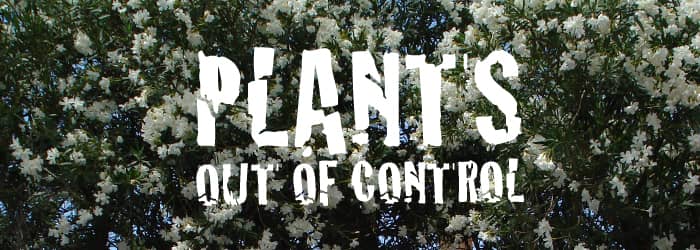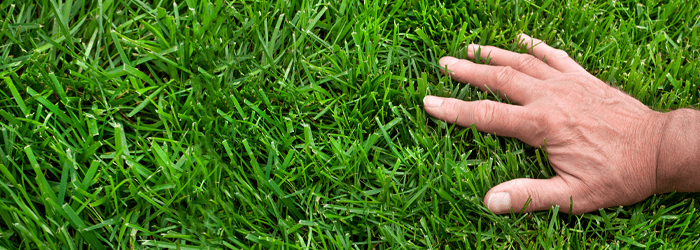EASY TO GROW PLANTS IN ARIZONA
Not long ago, we told you about plants that are tough to grow in Arizona. However, there are also plants that seem to LOVE Arizona; they grow easily and maybe grow too well. Then, when you decide to get rid of them, it’s hard to make them go away.
Be wary of Arizona plants that can take over your yard.
Dalbergia Sissoo
The Dalbergia sissoo, commonly known as Sissoo or Indian Rosewood. This is a tree that many homeowners plant because it’s very lush and fast-growing. Sissoos grow to a moderate height of 35 to 40 feet but their vigorous root systems can threaten underground irrigation lines, sidewalks, block walls and even lawns. The invasive roots can take over a yard after only a few years. Some homeowners complain about the many pods and leaves that drop off the tree, but its roots pose the biggest problem. Then when a decision is made to remove the tree, the real headaches begin.

“Although Dalbergia sissoo is not listed as an invasive species,” says Tree Expert John Eisenhower, “it is considered by many horticulturists to be a nuisance tree because of its aggressive rooting and sprouting.”
Homeowners often call our radio program to ask how they can stop the Sissoo roots and suckers from spreading in their yards. According to Eisenhower, most of the problems begin when homeowners decide they want to cut down a Sissoo. “Usually when you cut down a tree, it will be gone, but not a Sissoo. After the tree is cut down, it doesn’t just send up sprouts from the cut stump like other vigorous trees. It can send up shoots from every root that remains in the soil, creating an unwanted forest of trees, sometimes 100 feet from the stump,” he says.
If this happens to you, there are some steps you can take to control the roots and sprouts. According to Eisenhower, start by cutting down the tree and immediately applying a systemic herbicide into holes drilled into the outer sapwood ring on top of the stump. This will kill the stump as well as roots several feet from the tree. Additional spot spraying of new shoots may be needed over the next several months to achieve full control of sprouting.
Eisenhower added that the chemicals needed for stump, root and sprout treatments are not available over the counter and need to be applied by a licensed applicator with the Arizona Office of Pest Management.
A Good Word About Sissoos
Despite the risk that aggressive rooting Sissoos present, they remain a popular choice for homeowners and commercial properties. If Sissoos have adequate room to grow where they don’t encroach on surrounding landscape elements, they are beautiful and serviceable shade trees. In fact, in many respects, they are great evergreen trees, just often planted in the wrong place.
Macfadyena Unguis-Cati
Another plant that can refuse to die is Cat’s Claw (Macfadyena unguis-cati.) Homeowners often plant this drought-tolerant vine to cover up walls and fences. It’s hardy, loves the sun and gets yellow trumpet-shaped flowers in the spring. It can reach 25-feet-high and 25-feet-wide. But as I know from personal experience, once you plant it, you might have it forever. In fact, if you want to get rid of it to make it easier to paint your walls or a fence, you should use the same method of killing it as is recommended with the Sissoo tree. It’s not impossible to get rid of Cat’s Claw. It just takes patience to treat the resprouting for several months after the initial application.
Oleander

Speaking of flowers, the Oleander is another popular flowering shrub that has done really well in Arizona. Oleanders are often planted as hedges because they can reach 20 feet in height and be very wide as well – creating a great privacy screen. Sometimes they’re even pruned into trees.
But Eisenhower recommends thinking twice about planting Oleanders because many of them in the Phoenix area have been infected with Bacterial Leaf Scorch (Xylella fastidiosa,) spread by flying insects that feed on their leaves. The pathogen causes the leaves to turn yellow, dry up and drop off, and the entire plant usually dies within a few years.
“In central Phoenix, many neighborhoods have been decimated,” he says. “And there’s no known treatment available at this time to stop the disease.”
If you’re looking for a different plant to use as a hedge, try Sour Orange or Arizona Rosewood. Other options include Hopseed Bush and Yellow Bells. These last two are more susceptible to frost so they are not appropriate if you live in an especially cold area. If your Oleanders are healthy, consider yourself fortunate. They are evergreen, provide a dense privacy barrier, and achieve their landscape purpose quickly.
Article Updated December 2020
###
PHOTO CREDIT
- Header image: Rosie on the House
- Sissoo: Chris A. Martin, Arizona State University
RELATED CONTENT
- Blog: The Toughest Stuff to Grow in Arizona
- Blog: All About Saguaros
- DIY FAQ: Tips For Setting Up Your Drip irrigation System
- Search our DIY Home Improvement Database & Library
- Weekly Podcast: Subscribe for free!




















